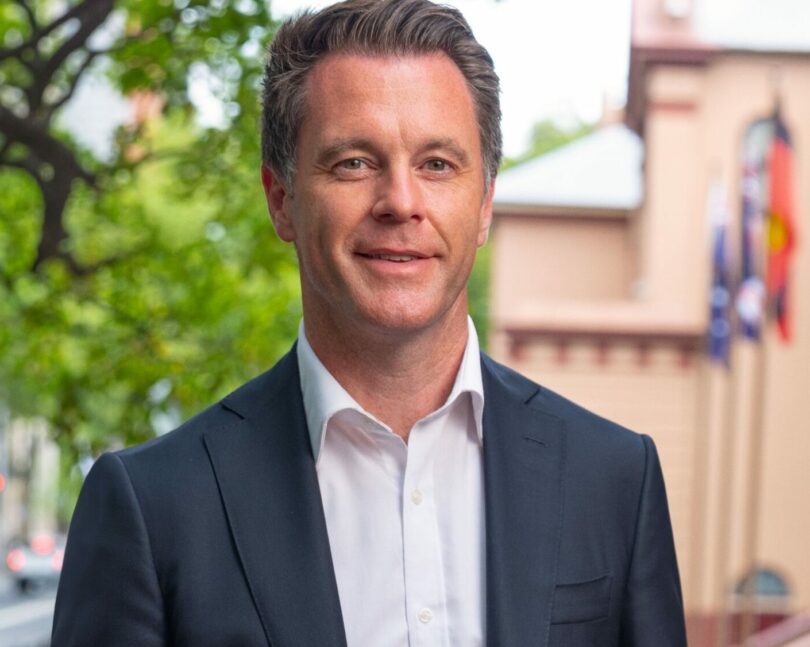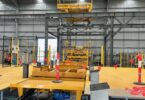SPEECH BY PREMIER OF NSW CHRIS MINNS -ON FIXING THE CRISIS IN HOUSING – NSW “STATE OF THE STATE” CEDA ADDRESS – HILTON SYDNEY
*Original Speech Delivered at the Hilton Hotel, Sydney 29 May,2024
- CEDA denotes Committee for Economic Development Australia
——————————————————————————————————-
It’s a privilege to be here, on the land of the Gadigal people.
I acknowledge the traditional owners and pay my respect to their elders past and present.
In opening , can I thank everyone at CEDA for inviting me to give this State of the State address. And to everyone on the live stream, I’m not sure why anyone would be on the livestream but I’m sure it’s got a big number that’s enjoying this virtually. Thanks for logging on.
CEDA has always prided itself on tackling the biggest challenges facing this country.
And as I see it today– no challenge is bigger than the housing crisis facing New South Wales.
Housing touches every major issue of public policy.
We’re talking about a single problem, that also:
Undermines social mobility.
Makes people work longer and harder for less reward.
Creates divides between generations.
In some instances drives a physical wedge between families.
And that undermines an entire generation entry into professional and personal horizons as they reach adulthood and look to their future.
A few years ago, a group of economists and planners from the UK published a paper on the topic – and they called the ‘housing theory of everything’.
Their argument was that, if you look at any major social problem in the developed world right now, it was either created by the housing crisis, or deepened by the housing crisis.
Consider the problem of inequality – between generations, but also within generations.
In NSW in the year 2000, the median home in Greater Sydney sold for six to seven times the salary of a mid career teacher – according to the Grattan Institute.
In 2022, it cost fourteen times the same salary.
So – relative to real wages – the price of new homes has doubled in a very short space of time.
Of course, that is going to strain the social fabric of a community.
You can’t double, or expect to double the most expensive cost of life and expect young people to feel like they have a future in a place like Sydney.
The same is true within generations.
Growing up, young Australians were told that, if they studied hard, if they did the right thing, if they got a good job, it didn’t matter what their parents did for a living – they would be ok.
But if they’re standing at an auction site, and more often than not scoping out their competition of potential bidders, it really does matter who is getting help with their deposit and who is going it alone.
So housing is a major driver of inequality.
I remember when I was young the big question asked among my generation was would I ever be able to afford to buy a place in Sydney. The big question asked by young people today is will I even be able to rent a place.
It’s also a considerable burden on productivity.
When housing costs rise like they have in recent decades, it pushes people further and further out away from centres of work.
That means more time spent commuting and travelling.
It means less opportunity to connect with people in business hubs or business circles – where recent statistics demonstrate innovation and connection is likely to establish itself and occur.
And for a city like Sydney – it means a continuous exodus of talent, leaving town for good, striking up a new community either somewhere else in the world or in other jurisdictions around Australia.
Coaching football teams.
Being part of the parent community.
Strating businesses. Backing themselves in places other than NSW.
We’re talking about people in the prime of their working lives.
We’re losing them, every year, twice as many as we get back in return as a result of inbound migration or interstate migration.
In fact, the Committee for Sydney recently published a report that said outward migration was costing us $10 billion a year in lost potential.
Now that lost potential is again from young people.
Young entrepreneurs. Young people prepared to back each other and back themselves and take a punt on the future.
They are establishing businesses, and they are joining communities. But its not here.
When you start listing these problems, you can’t stop seeing them.
Think about the birthrate and its impact on our retirement system.
Family planning is a complicated question, but surveys tell us that people are having fewer kids than they ordinarily would like to.
And here in New South Wales, the biggest impediment to that is housing.
If you don’t have a stable home, if you don’t have a place you can rely on, the prospect of raising is child, whilst already daunting, becomes that much more difficult.
Same is true for essential services – when teachers and nurses and police officers can no longer afford to live near their workplace, they’re going to move elsewhere.
Its also the case for the evils of domestic violence – when there are instances of women and children that feel like they can’t leave their abusers because of the growing rental costs.
I think you are getting the point that this is a problem that breeds other problems.
If we want to address a range of other issues facing our modern community and society, we have to deal with housing first.
That is clearly the case here in Sydney.
With a median house price in Sydney of more than $1.6 million.
And with median rent of $750 a month – up ten percent on last year – and is $120 more than the next most expensive capital, its important to state that a lot of our problems have historically been self-inflicted.
Consider this.
Since 1992, NSW has built six dwellings per 1,000 people every 12 months.
In contrast, Victoria has built eight per 1000 people and Queensland comes in first per capita on the Eastern seaboard with nine dwellings per 1000 people, every twelve months. And they have maintained that difference for decades now.
That shows us we have a planning system that isn’t keeping pace with the problems that we have.
It’s a system that holds back businesses, that adds extra costs to new projects.
A system that, as a culture, far too often, looks for excuses to delay action and investment, rather than for reasons to support it.
And we have a planning minister here in Paul Scully that has worked around the clock for the last 12 months to chance that culture and implement those changes.
That’s what we have sought to reform in government.
Since coming to office, we have given private developers and social housing providers a more direct route to planning approval.
We’ve given them greater height and floor space allowances when they want to build apartment blocks.
We’ve incentivised the inclusion of affordable housing in developer plans.
And in December last year, Paul announced the biggest single rezoning in modern Australian history of any jurisdiction in the country.
This is the crux of our plan, to build hundreds of thousands of well-located homes; close to infrastructure and transport links; next to amenities and crucially, next to jobs.
Firstly, with our transport oriented developments – allowing significant new housing around forty train stations.
And secondly, with our changes to low and mid-rise housing – allowing more townhouses, more terraces, more low-rise apartments, more manor houses.
Now these are big changes, and if you have read the paper you would have seen they have been fiercely resisted.
But the economic rationale is a very simple one.
If we want to keep this city liveable, then the supply of housing must keep up with the demand for it.
The evidence is very clear.
And we know that extra supply can make a difference, because we’ve seen what happened across the ditch in New Zealand, particularly in Auckland over the past ten years.
I’d ask you all to consider this as a case study.
Prior to that, Auckland was the most expensive city for renters in the entire country.
Eight years ago, they changed their zoning rules, to allow more medium density housing in the city.
That doubled the level of construction in the city. Success begets success once you get the big wheel churning when it comes to construction.
Now, with a greater housing supply, a recent study indicates that rents are anywhere between 14 and 35 percent lower than they would ordinarily have been.
And as a natural experiment, Auckland is now a cheaper city to rent in than Wellington.
What Auckland tells us is that better outcomes are possible.
Which is what our housing plan is seeking to do:
To put us on a different path in NSW, with more affordable housing, built around quality infrastructure and world-class transport.
So today, we are announcing more support to councils who deliver that housing and that infrastructure.
That’s more money to establish the kind of communities that families want to live in. We’re acutely aware that communities are concerned about the feel, the nature, the quality of the places that they live and we want to make sure that infrastructure is available for councils to keep pace with housing.
That’s more money to prop up the housing we desperately need in this state.
Since the beginning, I’ve been very clear that delivering on our housing goals will be an enormous task, across all levels of government.
We’ve been given some very ambitious numbers.
To put it in perspective, meeting our share of the national targets would mean building more homes than we’ve ever built in a year, every year for five years.
Most people would accept that is going to be tough.
Some of our critics have said it’s going to be impossible.
But we need to have an ambition to shoot for –
We need to be held to a higher standard.
Because the closer we get to those targets, the more houses that we actually build, the more lives will change.
The more young people will get a roof over their heads. More people will call Sydney and NSW their home.
Which is why, here this afternoon, we are announcing additional incentives for councils who build these houses and meet performance targets.
That means that parts of Sydney which drive more development will receive more funding for infrastructure in their area.
In other words, meeting and beating the housing targets will automatically translate to greater funding from the NSW government.
In fairness to councils, there are many out there that want to embrace this challenge and have been very clear with me and my colleagues about that; they would like to welcome more families, more businesses, more economic opportunities.
And under this policy, they will share an extra $200 million – to fund the green space, the footpaths, the new parks, local street upgrades, and wonderful high streets.
That comes on top of the $520 million we are already spending on infrastructure in those priority train precincts, in the TOD development centres.
More than half a billion dollars to connect water, to build new roads, to look at parks and amenities around Homebush, Hornsby, Bankstown, Kellyville, the Bays in Rozelle, any many others.
In addition to those two initiatives, we also announced $1 billion in reform for developer contributions last year.
We are making sure that, when developers benefit from new housing, they are financially contributing to the infrastructure needed to facilitate it.
That’s not just about building new homes; it’s about developing beautiful communities.
In the past, one of the reasons housing targets have failed is that we have placed an enormous burden on Western Sydney, and by any objective measure, we have not provided the infrastructure to cope with that increase in housing.
Adding an extra street to the western fringe of Sydney is no way to grow a city. Its one of the reasons that Sydney, despite being in the top 10 of most unaffordable in the world, is the eight-hundredth densest city in the world.
We’ve asked local councils to pick up the slack, to maintain the roads, to provide the parking, to make sure services are there for these new communities.
But they haven’t been given the help they need to do it; to keep up with the challenge.
That’s why we are introducing these additional incentives today.
It’s also why we’re seeking to rebalance the future of Sydney’s growth, towards established infrastructure. Infrastructure that has been built by generations of taxpayers, closer to the eastern seaboard.
This is the goal of our second announcement today.
For some time, councils have been asking us for concrete housing targets in their local government area.
Twelve of the thirteen relevant councils have already signed agreements for transport-oriented development in their patch.
But they want to know the full picture, so they can map out their plans over the next five years.
So today, we are releasing that roadmap.
This involves five-year targets across 43 local government areas in Sydney, the Illawarra, the Central Coast, Newcastle, and an overall target for regional NSW.
Now they are going to be hard to meet, as it is for the state and will be for some local government areas.
But the map is an important exercise, because it starts to rebalance Sydney – from greenfield almost exclusively to brownfield development.
For a long time, western Sydney has accepted the overwhelming burden of new housing growth in our city and as a result, social infrastructure has to stretch, more roads, more public transport needed to be built, we have added another to street to the western fringe of Sydney, but it has become far more difficult to get in and around this great town.
Under this plan, the west will continue to build new homes – but other parts of Sydney will have to share the load.
Under this new plan, the eastern ring will account for 41 percent of new planned dwellings; the middle ring, which includes suburbs like Parramatta, Canterbury Bankstown, Blacktown, Georges River, will deliver 37 percent; and the west will make up 22 percent.
For some of these councils, particularly those that have had very low housing targets and not much incentive to change it for a long time – it will be a substantial change.
In Kuringgai, Hunters Hill and Woollahra – over 70 percent of new housing will be delivered as a result of these changes.
But in Liverpool, Wollondilly and Parramatta – councils that were already planning housing at scale – it will be less than 20 percent.
The same goes for Blacktown Council – which was already planning 17,000 new dwellings. Not getting in the way of that. They are important new housing releases for young families, and western Sydney growth, particularly housing is an important part of the architecture of new zoning and new planning.
We want to build more homes around established infrastructure where ever we can; in places that are connected to work and transport; in communities that already have schools and hospitals.
There’s also a geographic constraint here.
When you have got a city that is flanked by the coast line, with mountains to the west, and rivers to the north and the south, encircled by a national park, the shift to infill becomes necessary.
This is fair to the west, but it’s also good for the east.
Think about this.
Currently, kids that live in those council areas are obviously growing up, as they reach age they will start their own families, and quickly realise they can’t afford to live in those communities anymore.
In many cases even with a substantial helping hand from mom and dad, families are moving away.
Grandparents are now driving to Newcastle or Bathurst for babysitting duties.
As the productively commissioner said not long ago, a city without grandchildren. And a city without young people friends, is a city without a future.
Part of the reason for that, aside from some people just deciding on a tree change or a sea change and embracing the beauty and opportunities in regional NSW, part of the reason is the housing stock in some of these areas has barely shifted since they were in school.
In other words, there has been no net increase in housing in the established suburbs in which some of these families lived.
If we meet these targets, we’ll be able to give more of those young families the chance to stay local, to stay within the distance of their parents and grandparents, within the communities they have grown up in. To give their children the same opportunities, the same goals and the same community that they had.
I’ll say it again – these are ambitious targets.
As a government, as a state, as a private sector economy, we need to do everything we possible can to meet them.
That means changing our planning laws.
It means supporting new housing, with funding for proper infrastructure.
And as you would know – it also means considering the workforce and finance issues that we believe, after consultation with the industry, are holding back the construction sector back in this state.
As part of designing these housing targets, we commissioned the Centre for International Economics on what was needed to meet our goals.
They concluded that achieving large increases in construction would also require:
Shifting activity from non-residential building and construction into new residential housing – now that’s good for the economy to have a dynamic, vibrant construction sector that’s able and nimble enough to look at different sectors of construction.
Improving productivity to deliver more housing with the same workforce –
And attracting additional workers and capital from other non-construction sectors or overseas.
We will be introducing legislation to shift how the construction sector does professional upskilling, so we can train the workforce needed in more complex commercial constructions like apartment building.
We’re also looking at modular construction.
This is already used for schools and police stations. There are many private sector operators that are desperate to get in. We are looking at ways to encourage them to get involved in residential housing construction sector in NSW.
We are now only a couple of weeks from the next NSW budget.
The policies we’ve covered this afternoon lean heavily on the private construction sector.
But we are also conscious that private enterprise can’t cover everything –there is a significant role for the state here.
Essential worker housing matters. Social housing matters.
Both are crucial parts to the housing mix. Particularly important for Sydney as one of the most expensive cities in the world and certainly the most expensive in Australia.
Under the previous government, twelve years were spent selling off $3.6 billion of public housing; to the point there were fewer social housing tenements at the end of their term than the start.
That is not our approach.
We’re looking at all options: bringing vacant homes back online, maintaining existing stock, and delivering more social homes as quickly as we can.
We don’t want to see this as a matter of private versus public.
We want every sector, in every corner of the economy, working at full capacity, pulling in the same direction for this important goal.
Friends, with a problem this large, there are many different traps we can fall into.
And I’m aware that previous premiers and maybe even previous planning ministers may well have come to this CEDA lunch and talked in an optimistic way about housing targets previously.
But perhaps the biggest trap we can fall into is pessimism.
Assuming things will only get worse, that the problem is unsurmountable, that things can’t get better.
We do have options.
Cities and states can make choices about their future.
We can set a new path.
We can face this crisis, while building a better city.
We can surround our people with vibrant communities.
We can, by planning properly, protect our greenspace and our beaches and our rivers, and our natural beauty.
And we can make these houses beautiful – not just cookie cutter, not just form, but places people want to grow up in and raise their children in.
All of that is within our reach.
All we need is the right plans, the right policies, good arguments, the right allies – and we can house the people and build the state we all want to live in and we all love.
Thank you.







